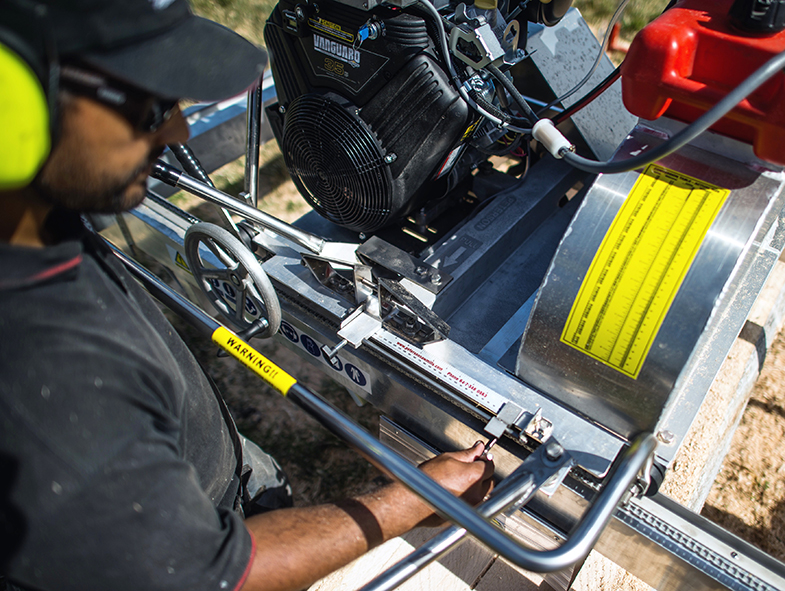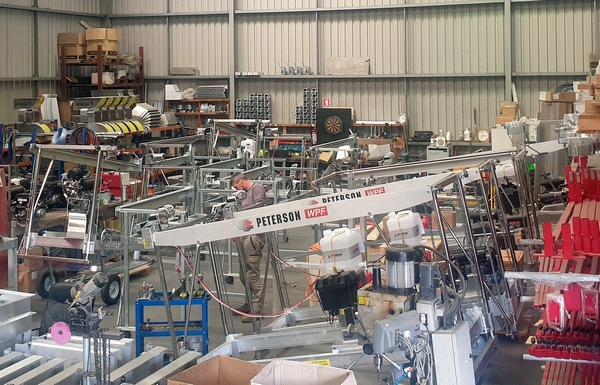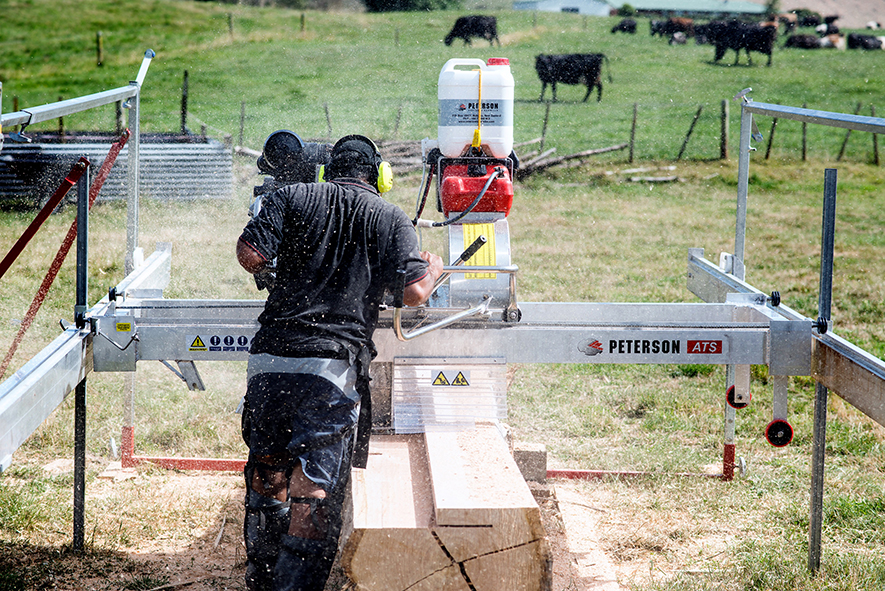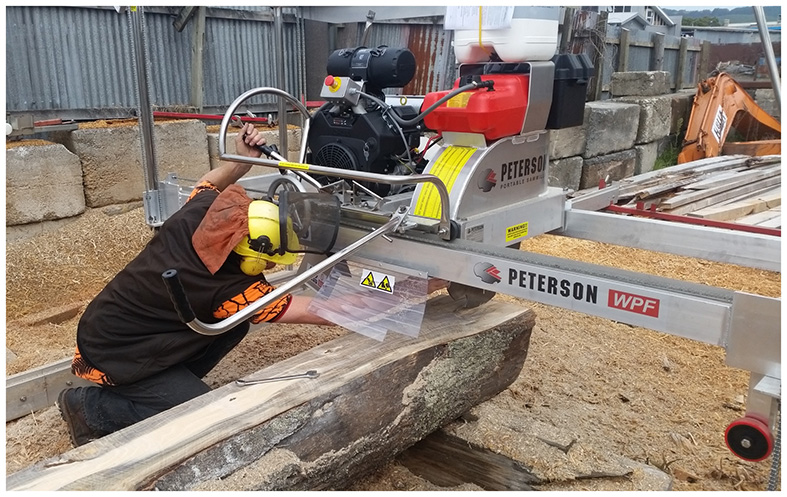Hi, i’m Aaron Kalan, Sales Manager at Peterson Portable Sawmills. This month I’m sharing the testing and calibration process we use for every Peterson sawmill before we approve delivery of the custom-order.

I’ve been working with Peterson Sawmill owners for more than 15 years and use the Peterson WPF on my own property. Here at Peterson’s Headquarters in New Zealand, I’m part of the team that finds quality portable sawmill solutions for sawmill owner-operators. I take pride in our business reputation as a manufacturer of reliable quality portable sawmills.
All of our Peterson sawmills are put together according to the customer’s specific order, then tested and calibrated. The mills are set up to cut a few boards from a log, using the full range of blade and winch adjustments. Then, we break the mill down into components again to pack for delivery. If the customer is to pick their new sawmill up from the factory, they simply load it on their pick-up truck deck or trailer and take it home.

Checks are made to the order sheet while gathering components from the factory shelves to complete the order to the customer’s specifications. Our experienced welders prepare all the welded components. Technical drawings are used to confirm the parts required, and factory jigs for welds and drainage holes ensure consistency. Each time we build a custom quality portable sawmill in the Peterson factory, this same process is used to ensure the same quality procedures are followed. The sawmill is thend scheduled for testing.
The sawmill is rolled out of the factory to the yard where we cut real logs to test and calibrate the every sawmill. Where possible, we will try to use logs that are similar in hardness to the logs that will be processed by the new sawmill owner-operator.

Occasionally, we will transport the mill to a customer’s site if we’re wanting promotional photographs for the launch of new accessories, such as the Junior Peterson Planer Blade released in 2016.
Once at its testing site, the mill is set up over the log, and one of Peterson’s Technical Specialists will run the mill to test and calibrate the operation using their knowledge to achieve the most efficient result. Chris Browne, and I are familiar with the features of each model and advise individual owners how to choose particular feature combinations to meet their sawmilling needs.
We test the functionality of all the sawmill components, to ensure they are working properly. From there, we check the horizontal and vertical blade adjustments are correct, and that the blade is running true. We also check the functionality of the emergency stop button. When the emergency stop is activated, the saw blade must stop within 10 seconds. This is one of the safety requirements of our CE certification.
Once the mill is put through its paces, and has passed all our quality and safety checks, it is thoroughly cleaned and rolled back into the factory. Most of the time, the testing process is smooth sailing. However, if on occasion the mill doesn’t perform as expected in the scheduled testing and calibration session, the troubleshooting process begins.
Earlier this week, Chris was testing a custom-order Winch Production Frame. He noticed that he had to use the full range of vertical height adjustment to raise the blade so that it wouldn’t mark the log. After completing a couple of cuts, Chris decided the WPF needed to go back to the factory for further inspection. He suspected that there was an issue with the axis points or the pivot unit where the gear box is mounted.

Together, Chris and Paul determined that there was a slight twist in the cast aluminium. They immediately pulled out the twisted aluminium pivot unit and fitted a new pivot unit. The new mill was scheduled for re-testing and calibration on the following day. This time, the swingblade showed the full range of vertical adjustment, without marking. Chris ran the mill over the log a couple more times, and found no additional issues.
I then emailed the customer to let him know that his sawmill had been tested twice due to an out-of-specification pivot unit, and was now ready. Within minutes, the new sawmill owner replied, “Thanks Aaron, that is so cool. You guys are the best I can’t wait to run a brand new mill. Give thanks to everyone involved. We’ll talk soon.”
This time, the process did not end there for our mill specialists who will now inspect the pivot unit drawing and determine whether the casting specifications require modification.
Peterson Portable Sawmills have a reputation for high quality reliable products, and I’m proud to be part of the team building these quality sawmilling solutions.
